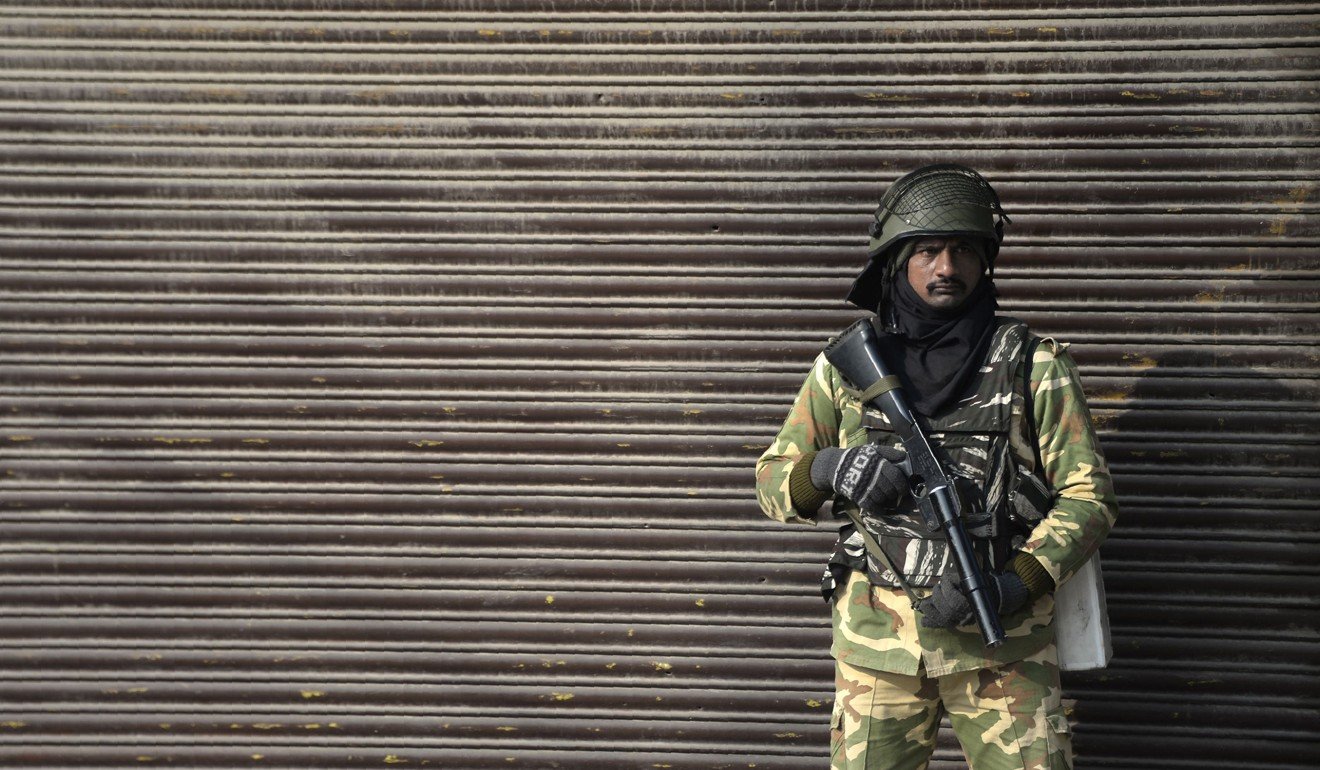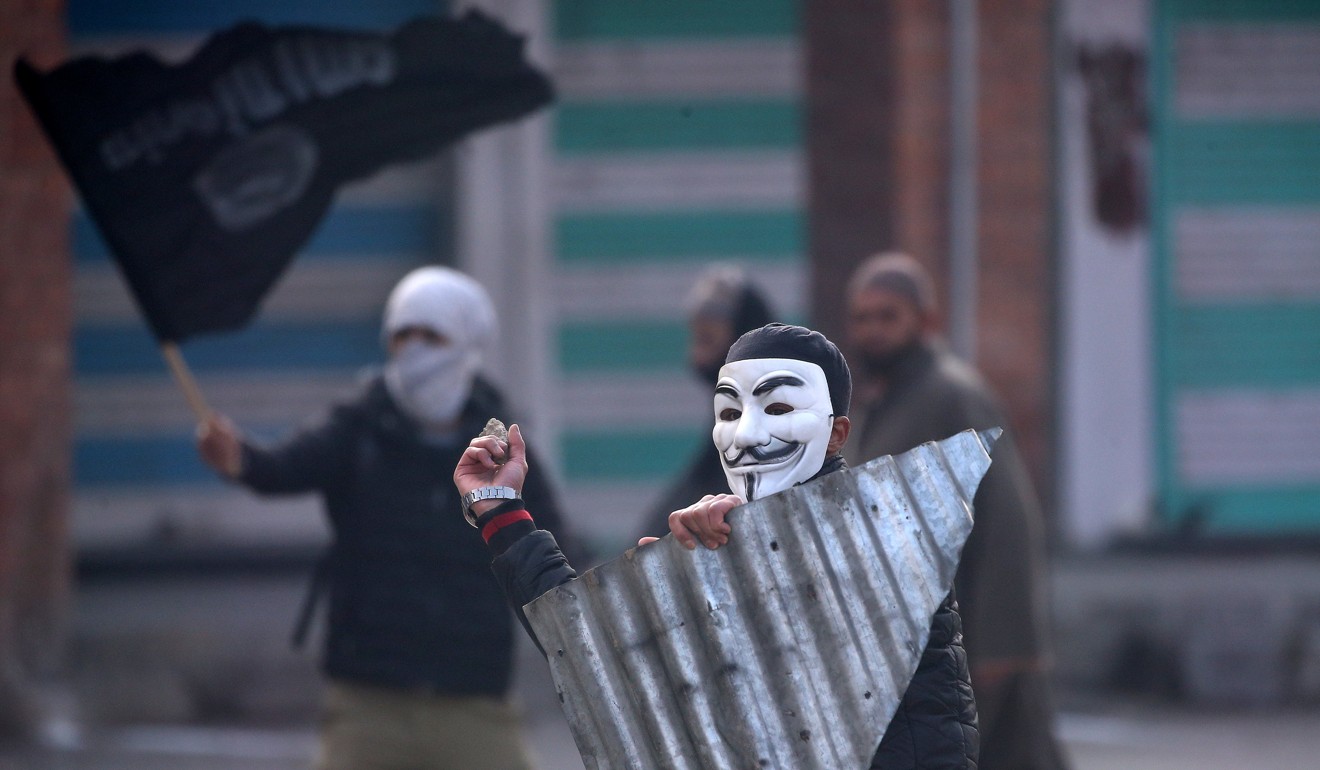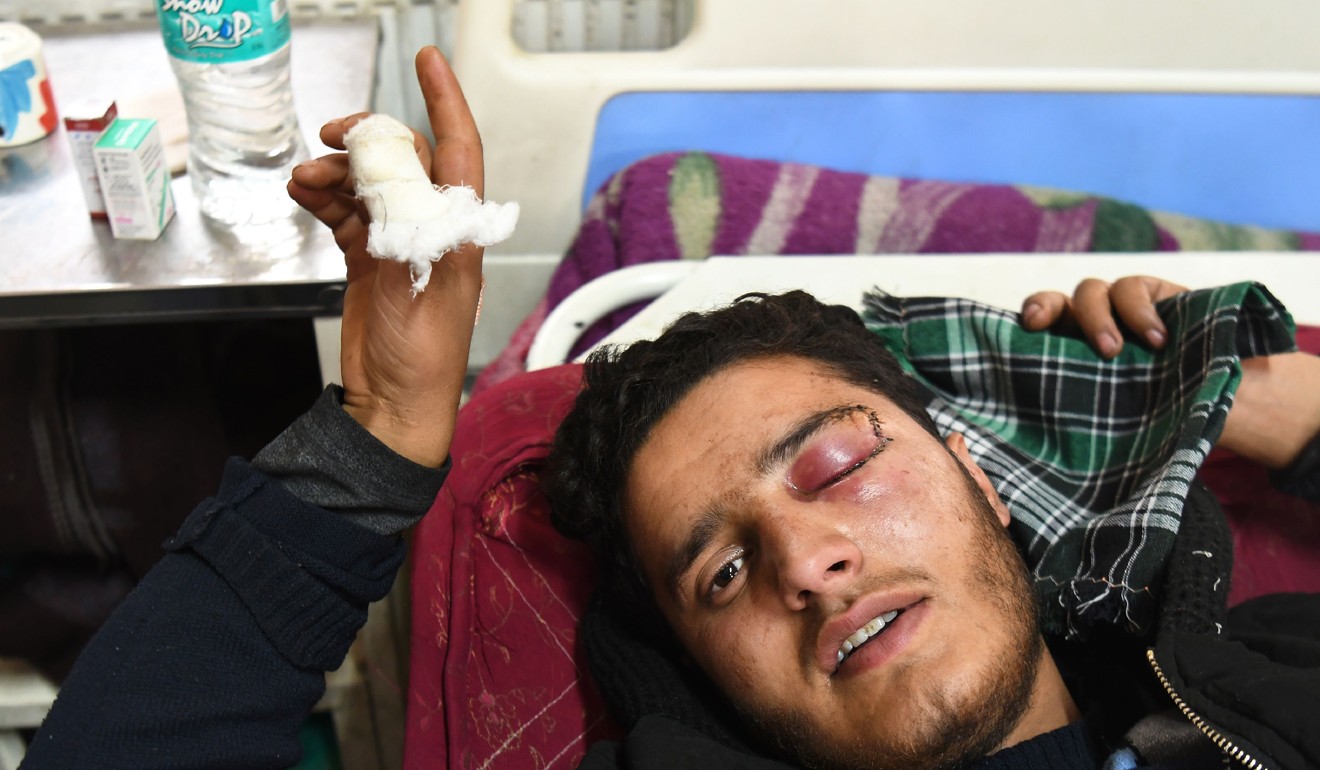
This was the deadliest year in a decade in Kashmir – but 2019 could be worse
- In 2018, the death toll for militants and security forces in Kashmir hit 324. Human rights groups put the civilian fatalities at over 100
- Violence is increasing in Kashmir as India’s ruthless pursuit of militants generates alienation and anger among Kashmiri youth
The security forces arrived in the Kashmiri village of Sirnoo in the middle of the night and surrounded their targets: three separatist militants fighting Indian rule.
Early Saturday morning, locals awakened to the sound of gunfire. As word of the clash spread, hundreds of young people converged on the area, throwing stones in an attempt to help the militants escape.
Then the security forces opened fire on the crowd, killing seven and wounding dozens more. One of those killed was a 14-year-old boy.
The killings marked the deadliest single encounter this year between security forces and civilians in Indian-administered Kashmir, part of India’s only Muslim-majority state where for three decades militants have fought either for independence or to join Pakistan.
The deaths also form part of a grim trend: violence is increasing in Kashmir as India’s ruthless pursuit of militants generates alienation and anger among Kashmiri youth.

In 2018, the death toll for militants and security forces in Kashmir touched the highest point in a decade, according to official figures, with more than 324 killed so far.
Human rights groups put the civilian fatalities at over 100. Almost no experts believe the situation will improve in the short term.
Is India’s All-Out campaign to blame for Kashmir’s civilian deaths?
The incident in Sirnoo, in the district of Pulwama, illustrates the turn for the worse. As security forces carry out operations, they are frequently confronted by crowds of people who, rather than scattering, try to block their way.
There is now a “generation of people whose only encounter with India seems to be through the prism of the security forces,” said Amitabh Mattoo, a professor of international relations at Jawaharlal Nehru University and a long-time observer of the Kashmir conflict.

A Himalayan region claimed by both India and Pakistan, Kashmir is divided between the two foes by a heavily militarised frontier.
The insurgency in Jammu and Kashmir began in 1989 and has ebbed and flowed in the intervening years. Pakistan has lent active support to the militancy, much to India’s fury.
The number of militants is thought to be only a few hundred at present, far less than at the insurgency’s peak in the 1990s and early 2000s.
Still, recruitment by militant groups is on the rise.
“The militancy is becoming much more home-grown now,” said Ayjaz Ahmad Wani, a fellow at the Observer Research Foundation, a think tank based in Delhi.
Indian troops enforce lockdown to foil Kashmir protest march
“The coming year may be more violent.”
Experts point to the 2016 killing of Burhan Wani, a 22-year-old militant commander who built a devoted following on social media, as a crucial turning point.
In the weeks after Wani’s death, huge protests broke out across Kashmir.
In response, India used “excessive force that led to unlawful killings and a very high number of injuries,” according to a report released in June by the UN high commissioner for human rights.
The report also cited India’s use of “inherently inaccurate and indiscriminate” pellet-firing shotguns as a means of crowd dispersal, which left hundreds blinded. India rejected the report’s findings.

The upturn in violence coincided with the absence of any meaningful political process to address Kashmiri grievances on the part of the federal government, whose embrace of Hindu chauvinism has distressed Muslims across India.
“New Delhi has created the opportunity for the escalation, which has been taken advantage of by Pakistan [and] by the separatists,” said Ajai Sahni, executive director of the Institute for Conflict Management in Delhi.
Security officials in Kashmir say the increasing number of militants being killed is a sign of success. “We have launched more anti-militancy operations this year,” said Ravideep Sahai, a senior officer in the Central Reserve Police Force based in Srinagar.
That also increases the risk to security personnel, he said: More operations lead to greater chances of fatal encounters.
Meanwhile, there are signs that militants are also changing their tactics. In recent months, they have abducted and killed policemen.
In November, the Hizbul mujahideen, a local militant group, circulated videos on social media showing the executions of alleged informers – a brutal move not seen before in Kashmir.

In the village of Sirnoo, members of Hizbul mujahideen dug a trench in a nearby orchard, covered it with sheets of corrugated metal and used it as a hideout.
The gun battle between the militants and the security forces lasted an hour, villagers said. When it was over, three militants and one soldier were dead.
“There was a hideout inside the orchard from which the militants came out to fire at the security forces. Why would the crowd go to the encounter site? They wanted to disrupt the operations,” said Muneer Ahmad Khan, a senior police officer.
In a statement, the police said that “a crowd came dangerously close” to the site of the encounter with militants and expressed regret at the civilian deaths.
As the security forces retreated, groups of young men began to pelt them with stones, said Mushtaq Ahmad Wani, 28, who saw the clash move from the site of the gun battle with the militants to the village itself.
Ghulam Mohidin Lone, 80, said the security forces fired into the air to disperse the crowds.
Then a vehicle stopped outside his house, and soldiers began shooting.
One bullet hit 18-year-old Owais Yusuf Najar, who Lone said was tending to another injured person. “He died on the spot,” said Lone.
“His brain spilled out.”
Owais’s father, Mohammad Yusuf Najar, said his son was working as an auto mechanic and planned to continue his studies.
“He was not a stone-thrower, he was not a militant. He had just gone to fetch water for an injured boy before he was killed,” Najar said. His death “is a wound which will never heal.”

